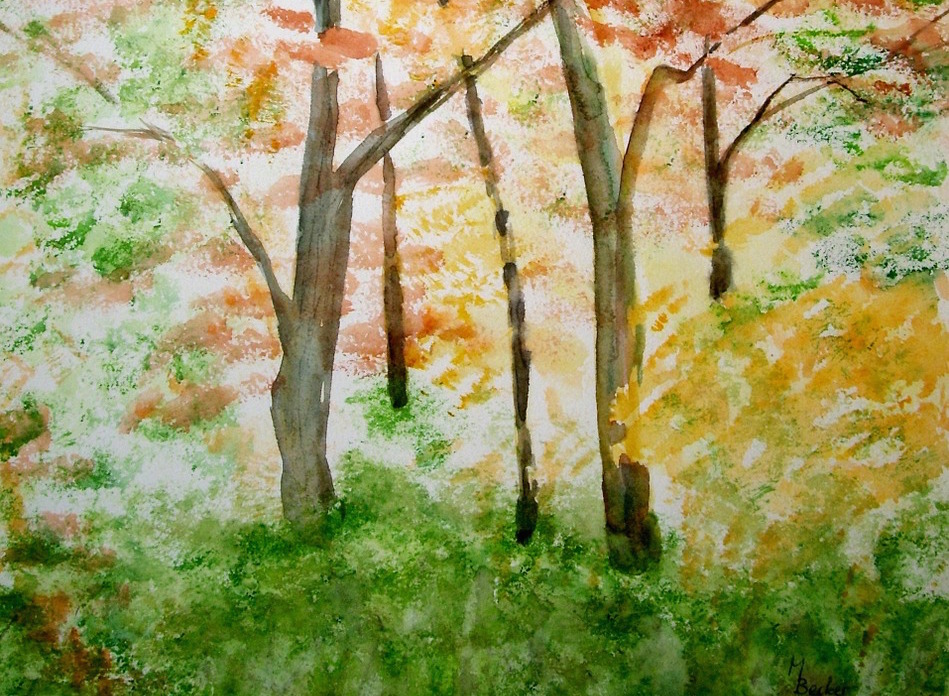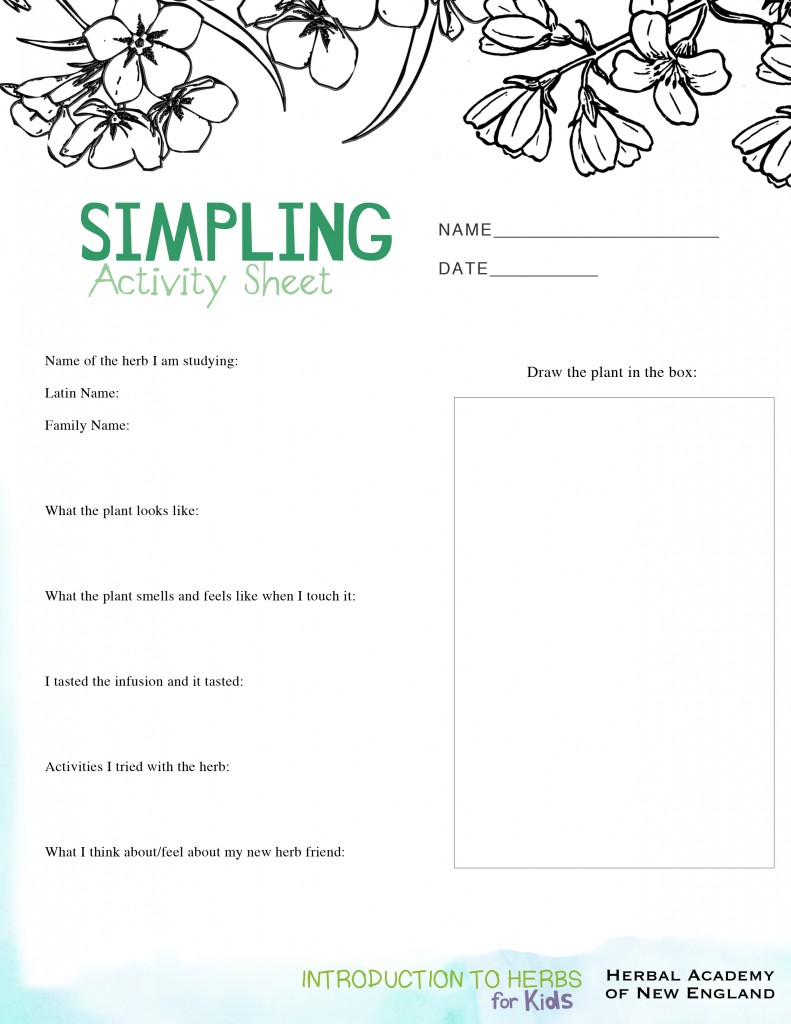
Introduction To Herbs For Kids: Keep It Simple
Make A Special Friend
Do you want to become really good friends with herbs? One simple way to do this is by spending special time with each plant as you are learning about it and using this time to create a relationship together. It is like when you spend an afternoon with just one friend — you may become closer during that time together than you would if you were hanging out with a lot of friends all at once. You can do the same thing with herbs by working with and using one herb at a time. This process is called simpling by herbalists and it is a great way to get to know each herb you meet!
In our series, Introduction To Herbs For Kids (follow the series here) we have already learned a lot together about herbalism. We have explored ways to make some lovely herbal remedies and have even learned about the silly names that plants have. I hope you have had as much fun as I have so far! Now let’s take some time to become really good friends with a few special herbs.
Special Herbal Terms
- Anti-inflammatory: Something that helps to reduce inflammation and swelling.
- Antiviral: “Anti” means against and “viral” refers to a virus. So antiviral means against viruses. Viruses are tiny germs that can make you sick with a cold or with the flu.
- Astringent: An astringent herb is a plant that can assist in the tightening and firming up of tissues which helps to reduce secretions such as bleeding or a runny nose.
- Aromatic oils: These are oils in plants that make the plant smell, usually very good!
- Carminative: A property of some plants that means it can help relieve a gassy tummy.
- Mucilage: A slippery, slimy substance found in some plants that can help to soothe irritated tissues.
- Nervine: A plant that helps to take care of the nervous system, often helping to ease stress and make you feel calm.
- Simpling: Getting to know and using herbs one at a time.
Take Your Time
When you work with one herb at a time you get the chance to learn all about that plant. How does it smell when it is fresh? How about when it is dry? What does the herb taste like? Where does it like to grow? How does it make you feel when you smell it, taste it, or use it on your skin? This is wonderful knowledge to have!
Another thing that happens when you work with one plant at a time is that you might find that some plants aren’t a great friend for you. This is okay because not every herb is a good match for everybody. You might find that you don’t like how it makes you feel or maybe something just doesn’t seem right between you and a particular herb. This is also great knowledge to have!
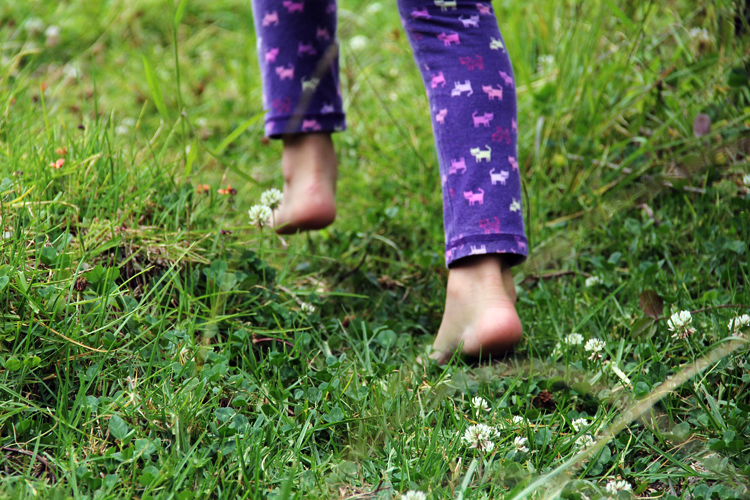
Take a day, a week, a month, or even a year and pick a plant to work with. Befriend this one herb during this time. With your parent’s guidance, play with the herb in as many ways as you can. Follow our pharmacy guidelines from the last lesson to help you prepare the herb and taste it as an infusion. You can also make it into a compress or a poultice. How else can you play with this herb? How about making it into an herbal bath? Can you add the herb to your food? I like to chop up herbs and add them to cookies and muffins!
By now you should know a lot about your new friend. Make a new section in your pharmacy notebook for simpling and add some notes about your new friend.
If possible, find the plants in nature or grow them in your garden. Take time to touch and smell your new herbal friend. Sit quietly with the plant and listen. If you are really quiet, sometimes the plants will talk with you, and share their special secrets. After all it is important to listen well to be a good friend. This is a great time to draw a picture of the herb you are studying.
Being creative and making crafts with herbs in another wonderful way to get to know the plants. For younger kids, this can be something as simple as adding the plant to playdoh for hands-on play. Older kids might enjoy creating a beautiful wreath or studying the plant by painting or drawing a still life!
Herbs To Get To Know
Here are five of my very best plant friends and some of the special ways we play together. Pick one of these to play with or another herb that is calling to you. Other friendly herbs for kids are violet, calendula, dandelion, ginger, and many of the herbs from the mint family. Make sure you have adult help and permission before getting started.
![Introduction To Herbs For Kids: Keep It Simple [simpling method]](http://theherbalacademy.com/wp-content/uploads/2015/03/Lemon-Balm-by-HANE.jpg)
Lemon Balm (Melissa officinalis)
Delightful lemon balm is a child’s favorite herb. It smells amazing and makes a delicious infusion. When asked, many of the children I have worked with say that lemon balm smells “happy!” Lemon balm is considered to be a nervine by herbalists, which means that it helps people when they are feeling tense. Herbalists also use lemon balm to help people who are sick with a cold or flu because it is antiviral. Here are some fun ways to become friends with lemon balm.
Taste It!
Lemon balm is so tasty. Use it to make a yummy infusion. Chew a fresh leaf and see what you think. How does it make you feel? You can add chopped leaves to salads and cookies, too!
Grow It!
Can you find fresh lemon balm growing? It may be in your garden already! If not, consider inviting lemon balm to come and grow in your garden. It is a wonderful fresh herb to play with.
Meet Lemon Balm’s Family!
Being a member of the mint (Lamiaceae) family means that lemon balm has many of those special plant characteristics that the plants in the mint family share. When we were exploring botany, we talked a bit about these special characteristics. Lemon balm has a lot of aromatic oils which make it smell so good! It also has a square stem and opposite leaves. If you can find some fresh lemon balm, go over and say “hi!” Feel its neat square stems and look for its opposite leaves.
Pound It!
Release those fragrant oils and make a lemon balm print by pounding it. Fold a piece of paper in half and put a fresh lemon balm stalk inside. Now, using a hammer, carefully pound the top of the paper over where the plant is. The pounding will make a cool print of the lemon balm and it will smell so good! Can you see the square stem and opposite leaves on your print? Make sure to get a parent’s help for using the hammer and watch your fingers!
These special projects are fun to do with many of the plants in the mint family. Remember, to practice simpling, make friends with one of these herbs at a time. Choose from: lavender, peppermint, spearmint, hyssop, or rosemary.
![Introduction To Herbs For Kids: Keep It Simple [simpling method]](http://theherbalacademy.com/wp-content/uploads/2015/03/Chamomile-flowers-in-the-wild.jpg)
Chamomile (Matricaria chamomilla)
Chamomile is another lovely herb for children. It loves the water and makes a wonderful infusion for drinking as well as for making compresses and baths. Like lemon balm, herbalists consider chamomile to be a nervine. It is also an anti-inflammatory that can help soothe skin irritations. Try making chamomile into a healing compress for scraped skin or drinking the infusion to help calm your nerves. Here are some fun ways to become friends with chamomile.
Taste It!
Chamomile has a bittersweet flavor and the longer it steeps, the more bitter it becomes. Try an experiment with chamomile and steep the infusion for different lengths of time. What does it taste like if you steep it for 3 minutes? How about 5 minutes? And at 10 minutes, does it still taste good to you?
Bathe in it!
Here is another chamomile experiment to try: take a chamomile bath before bed! Infuse chamomile for at least 30 minutes, longer is stronger, and then strain the liquid into your tub. The next morning, write down how you slept.
Grow It!
Chamomile is easy to grow and sprout from seed. It has the sweetest little flowers with bright, vivid, yellow centers, tiny white petals, and a lovely apple-like fragrance. The flowers are fun to harvest, filling the senses with beauty.
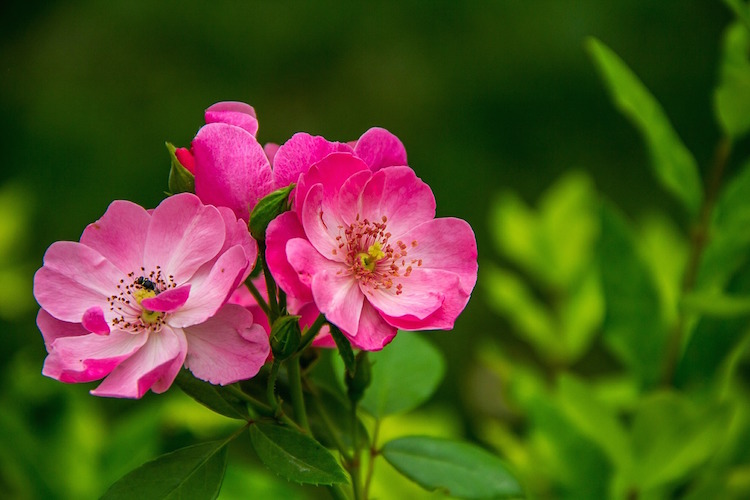
Rose (Rosa spp.)
Roses are enchanting and sweet. The soft, silky petals of fresh roses and the precious little dried baby rosebuds are such fun for kids and fill the senses. Rose petals make a tasty infusion which herbalists consider to be gently astringent which means it helps to tighten and firm tissues. Because of this it can be very helpful for colds with coughs and runny noses. And rose’s astringent abilities can help to stop bleeding! A few rose petals used as a little fairy bandage (or poultice) is a wonderful way to use rose on bleeding wounds. Roses are also considered to be a nervine. They are known for lifting the spirit and easing nervous stress. Here are some fun ways to become friends with rose.
Taste it!
Can you believe that you can drink infusion made from roses? It is so yummy! When you taste it, sit quietly for a bit and see how it makes you feel.
Meditate with it!
Rose speaks to the heart, which makes it a great herb with which to meditate. To start, connect with rose by drinking a cup of infusion. Then sit with a cut rose or rose bush and gently caress the petals. Breathe deeply into your heart and imagine your heart like a closed rosebud. With each breath in picture your heart blossoming!
Play with it!
Roses are great to play with. The dried baby rosebuds make a great crafting material. You can use them to decorate wreaths and barrettes, and also as a fantastic playdoh decoration! Fresh rose petals are soft and silky to the touch. Use them to make fairy blankets and scatter them in the bath for a special treat.
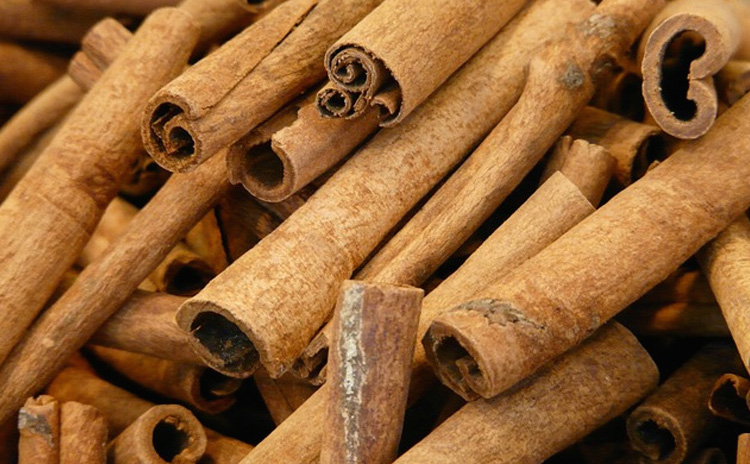
Cinnamon (Cinnamomum spp.)
Have you ever made cookies with cinnamon? Or had powdered cinnamon sprinkled on top of a cup of hot cocoa? Cinnamon is delicious! Herbalists consider cinnamon to be an herb that helps to warm you up if you feel cold. Cinnamon also has a carminative action which means that it can help relieve a gassy tummy. Warming cinnamon is a strong plant to make friends with. Because cinnamon is strong and can even be spicy, you don’t need to use a lot of cinnamon when you are getting to know each other! It is good to use as an accent, like kind of like you would use ketchup on fries. Here are some fun ways to become friends with cinnamon.
Taste it!
Cinnamon makes a tasty addition to so many baked goods. Add it to cookies, muffins, pancakes, and more. You can even whip some ground cinnamon into softened butter with a bit of honey to make a delicious topping. Add a couple of cinnamon sticks to a pot of tea, apple cider, or hot chocolate for a delicious treat. I even like to make cinnamon tea by steeping 2 to 4 cinnamon sticks in a pint of hot water for 10 to 20 minutes. Yum!
Experiment with it!
Mix a teaspoon of ground cinnamon into a ¼ cup of hot water. Wait a few minutes to let it cool and then check out what has happened to the cinnamon. Cinnamon is mucilaginous and creates a neat slime when combined with water! If you touch it, you can feel this slipperiness yourself.
Play with it!
Add ground cinnamon to warm playdoh for a special aromatic treat. You can also add it to homemade clay and paint.
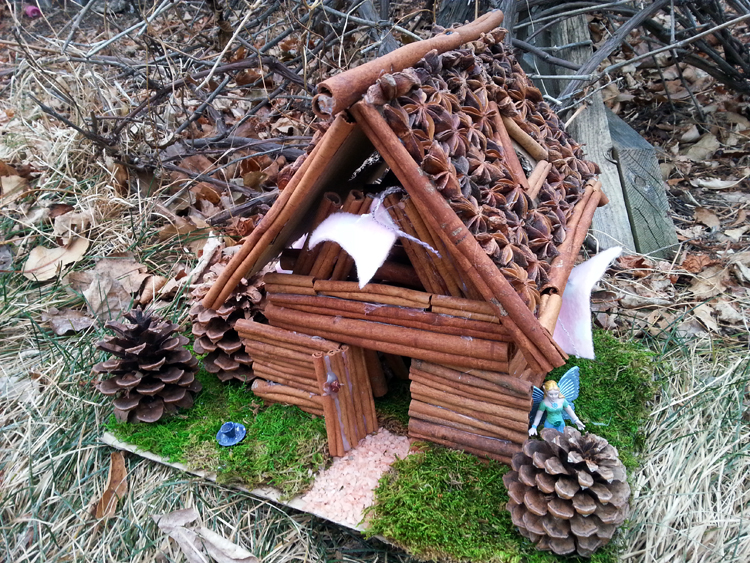
Build with it!
Cinnamon sticks are very fun to play with. They are smooth and smell so good. With your parent’s assistance, use a hot glue to create with cinnamon sticks. Use them to decorate wreaths and even for building houses or fairy furniture.
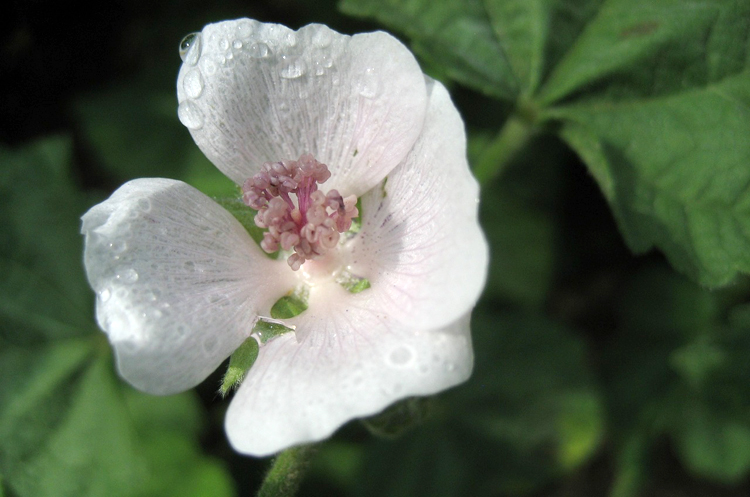
Marshmallow (Althaea officinalis)
Did you know there is a plant called marshmallow? It is quite different from the fluffy treats we know today. But the root of marshmallow was the original marshmallow and was likely made as a sweet treat that helped to soothe sore throats and coughs. Marshmallow is a good friend when you are sick with a dry cough and even for an upset tummy with diarrhea. Here are some fun ways to become friends with marshmallow.
Drink it!
Did you notice marshmallow’s special slipperiness? How does it make your body feel?
Apply it!
Try playing with marshmallow’s goopy mucilage. Use either pieces of marshmallow root or ground marshmallow root to make into a poultice (visit here for instructions) or even simply rub the mucilage on your skin.
Research it!
Look up the history of marshmallow to learn about where the first marshmallows came from and how they were changed into what we know today as a marshmallow.
Ways For Young Kids To Play With Herbs
Try adding your herb friend to any of these recipes. It is another way to play and get to know each other!
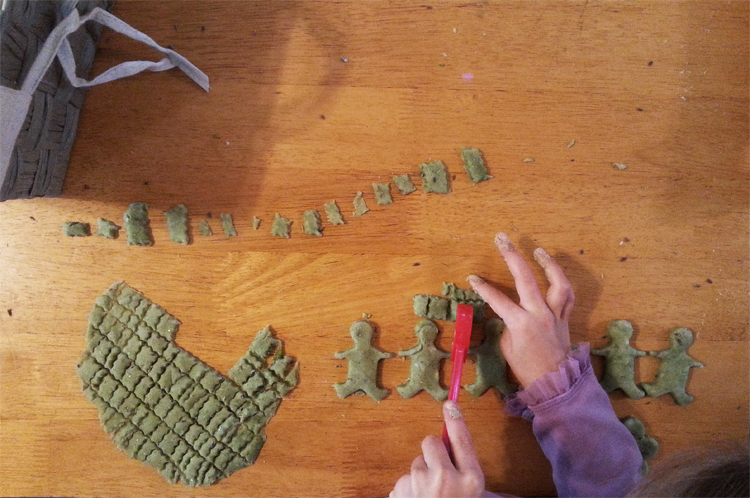
Make Playdoh
Do you love to play with playdoh? I sure do! It is so fun to squeeze and shape into neat things. Did you know that you can make your own playdoh at home? You sure can, and it is very easy to do. Be sure to get an adult to help you because playdoh needs to be cooked on the stove. You can invite the herb you are learning about to come and play with you. Use an infused oil or herbal infusion made from your herb in the recipe below. You can also play with the actual herb when enjoying playdoh. Flowers, stems, and leaves become lovely decorations. Powdered herbs like cinnamon and ginger help to color the playdoh and make it smell amazing!
Herbal Playdough
½ cup salt
1 ½ teaspoon cream of tartar
1 tablespoon of oil (good choices are herbal infused oil, coconut oil, olive oil or even shea butter)
1 cup of water or strong herbal infusion
Your new herb friend’s flowers, leaves, or even ground up herb.
- With your parent’s help, measure everything into a pan and stir it all together.
- Gently heat the mixture over medium low heat and stir it often while it firms up into a lovely dough.
- Playdoh right off the stove is hot! Let it cool and then you can play.
- While you play, you can invite your new herb friend to join in the fun! Are you learning about chamomile? You can sprinkle the flowers on top of your play dough as a beautiful decoration. Is lemon balm the plant you are getting to know? Tear up the leaves and massage them into the dough, don’t they smell good? Or is cinnamon your new friend? Knead that ground cinnamon right into your playdoh and then you can make delightful smelling playdoh cookies!
Herbal Paint
Herbal paint is another fun way to play with herbs and create a lovely piece of artwork at the same time! Just like with the playdoh recipe above, you can invite the herb you are learning about to come and play with you when making paint. Use an herbal infusion made from your herb in the recipe below and grind up some herb to add to the paint, too! Again, be sure to get an adult to help you because this recipe also needs to be cooked on the stove.
Herbal Paint
1 teaspoon salt
1 to 2 tablespoons ground herb
1 cup cold herbal infusion
1 cup hot herbal infusion
- With your parent’s help, mix together the flour, salt, and ground herb in a pan.
- Whisk in the cold infusion.
- Heat this over medium low heat and whisk in the hot infusion, beating until the paint becomes smooth and creamy.
- Let cool before painting!
- You can use this paint as a finger paint or use paint brushes.
Ways For Older Kids To Play With Herbs
Herbs make beautiful craft material. It can be a real treat to spend some time creating a lovely piece of artwork for your home or even as a very special gift. Here are a few ideas to get you started.
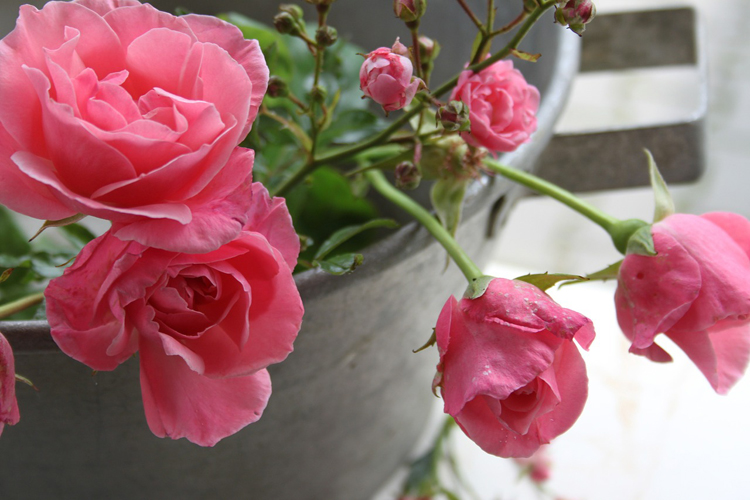
Still Life
Have you ever seen a drawing or painting of a bowl of fruit? That is an example of a still life piece of art. Still life is art that captures something that cannot move. And because our herb friends have no legs, we can use them to inspire still life art. If you like to draw or paint, this is a great way for you to work with plants. Find an herb you would like to study that is growing in nature or the garden. Or perhaps you only have it available dried — that is okay, too. Can you set it up to look interesting? Once you have your subject (herb) all ready to go, then get busy drawing or painting it. See if you can capture the plant. While you are working, consider the plant. What are you learning about it?
Wreaths & More
Dried roses, dried calendula flowers, and cinnamon sticks are perfect for decorating grapevine wreaths. If you are old enough, with parent permission, use a hot glue gun to attach the plant to a grapevine wreath. Follow your intuition about where the plants should go as you work your way around the wreath. Do you want to cover the entire wreath with herbs or just have them clustered in one spot? Add a pretty ribbon and you are done!
You can also use your trusty hot glue gun to make other things with herbs. Some of our favorites are fairy furniture and houses made with cinnamon sticks and pretty barrettes decorated with baby rosebuds. Use your imagination and see what you can create!
Simpling Activity Sheet
Print and fill out the Simpling Activity Sheet while meeting your new herb friend. Add it to the pharmacy notebook you started during our last lesson, a binder, or the an herbal keepsake box. That way, you will have some of your great herbal knowledge stored where you can find it.
A Note To Parents
Hi Parents! Thanks for joining us. This lesson’s focus on herbal simples will hopefully encourage your child to get to really know one plant at a time. There is a lot to learn through this extensive and focused interaction. You and your child will hopefully be able to notice a lot of things about the plants as you go beyond what it simply tastes like and what the books say it is good for. When working with plants in this way, there is a depth of personal knowledge gained that is invaluable! This knowledge is what has brought herbal medicine to humanity. People working closely with herbs throughout history is how we know what we know today about herbal medicine.Help your child with their learning. Let them play with the herb and encourage them to use it in as many ways as they can. Provide them with materials they need for experimenting and creating. When they notice something interesting about their new herb friend, encourage them to make a note.
Remember Safety First! Please help your kids be safe when learning about and using herbs. Some of the activities above require use of the stove and hot glue guns, so please supervise when appropriate. Also, remember that not all herbs are good for all people. Consider doing the scratch test* when introducing any new herb into your child’s life. This is one of the advantages of simpling. When working with one plant at a time, you will know that any adverse reactions were likely caused by the herb you are using; with formulas, the reaction could be caused by any of the herbs in the formula. Please take note that cinnamon is not to be used internally in large quantities. Typical culinary use is perfect. Also, some people may be allergic to chamomile. It is in the ragweed family and can cause problems for some folks. Please use the scratch test* if you are unsure about how your child will react to chamomile.
*To do the scratch test, take a small amount of the herb and rub it on your child’s inner arm. Wait 24 hours to see if there is any reaction before using the herb with your child.
Parents, would you like to learn more about simpling? Understanding the Simplicity of Herbs has more information on this topic and you can learn even more in our online programs! Our Herbarium offers a wonderful resource for folks wanting to develop special relationships with plants. In the Herbarium, you will find in-depth herbal monographs. Herbal monographs talk about one herb at a time and have detailed descriptions of herbs including botany, historical use, actions, energetics, and modern uses. Become a member of our Herbarium to get this wonderful resource right at your fingertips! For even more learning, we offer Introductory and Intermediate Courses in herbalism.

